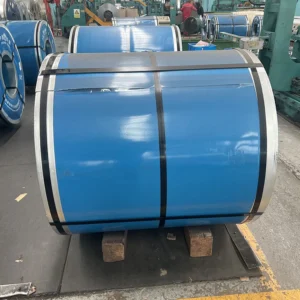Cold Rolled Electrical Steel Industry Update: Global Demand, Production Trends, and Innovation
As the global energy sector continues to prioritize efficiency and decarbonization, cold rolled electrical steel has emerged as a critical material in powering modern infrastructure. From high-performance transformers to electric vehicle motors and smart grid systems, this specialized steel is a backbone of efficient electromagnetic performance.
In 2025, the cold rolled electrical steel market is experiencing rapid evolution, with major developments occurring in Europe, the Middle East, and Asia-Pacific. Driven by surging industrial demand, green energy transitions, and technological innovation, this segment of the steel industry is seeing increased investment and strategic realignment. This report covers the latest industry updates, market trends, and technological advancements affecting cold rolled electrical steel globally.
Market Growth and Regional Developments
Cold rolled electrical steel, primarily categorized into grain-oriented (GO) and non-grain-oriented (NGO) types, is known for its high magnetic permeability, low hysteresis loss, and excellent surface finish. These properties are enhanced through the cold rolling process, which ensures precision thickness and uniform grain structure.
The global market for cold rolled electrical steel is projected to exceed USD 38 billion by 2030, with a compound annual growth rate (CAGR) of approximately 7%. The demand is being driven by two major sectors: the expansion of renewable energy infrastructure and the rise of electric mobility.
In Europe, the electrical steel sector is gaining momentum as countries work toward their climate neutrality goals. Grid modernization initiatives, particularly in Germany and France, are creating substantial demand for high-efficiency transformers made from cold rolled electrical steel. Local producers are also focusing on reducing carbon footprints through low-emission steelmaking techniques and circular supply chains.
In the Middle East, countries like the UAE and Saudi Arabia are expanding smart city infrastructure and large-scale energy projects. The construction of advanced substations and high-efficiency electric motors is prompting regional manufacturers and contractors to increase imports of cold rolled electrical steel, especially from European and Asian suppliers.
Asia-Pacific remains the production hub for cold rolled electrical steel, with China, South Korea, and Japan leading global exports. However, trade tensions and energy cost pressures have encouraged Western manufacturers to localize or diversify their supply chains.
Technological Advancements and Product Innovations
Modern production of cold rolled electrical steel involves advanced processing technologies including continuous annealing, laser scribing, and domain refinement. These processes are crucial in minimizing core loss and improving magnetic performance in end-use applications.
Grain-oriented cold rolled electrical steel continues to dominate transformer applications, thanks to its ability to channel magnetic flux in a single direction with minimal loss. New innovations now allow GO steel to achieve even lower watt-loss levels at higher magnetic flux densities, ideal for ultra-efficient power grid transformers.
Non-grain-oriented cold rolled electrical steel, which has isotropic magnetic properties, is essential for rotating machinery such as motors and generators. Recent advances have led to thinner laminations and specialized coatings that further reduce eddy current losses, especially at high frequencies.
Companies in South Korea and Germany have begun integrating artificial intelligence (AI) into cold rolling mills for real-time quality control. These systems analyze microstructural uniformity, rolling pressure, and temperature profiles to optimize performance and reduce material waste.
Sustainability and ESG Considerations
As environmental, social, and governance (ESG) standards tighten, manufacturers of cold rolled electrical steel are adopting greener practices. Several producers have begun using hydrogen-based annealing processes and renewable electricity in their rolling mills to reduce carbon emissions.
In Europe, steelmakers are aligning with the EU’s Carbon Border Adjustment Mechanism (CBAM), which imposes carbon-related tariffs on high-emission imports. As a result, buyers are placing greater value on traceability, life-cycle data, and supply chain transparency when sourcing cold rolled electrical steel.
Recycling is also a growing focus. Cold rolled electrical steel can be recovered and reused with minimal degradation of magnetic properties, making it an attractive option for circular economy models. Recycling initiatives are particularly relevant in the decommissioning of aging power infrastructure in Western countries.
Challenges and Strategic Opportunities
Despite the strong outlook, the cold rolled electrical steel industry faces several challenges. These include:
- Raw material volatility: Fluctuations in silicon, iron, and alloying elements can impact production costs.
- Supply chain disruptions: Geopolitical instability and shipping delays have created bottlenecks in global deliveries.
- Workforce shortages: Skilled labor for precision cold rolling operations is in high demand but short supply.
To address these issues, several global companies are investing in localized production facilities closer to end markets. Strategic partnerships between OEMs and steel manufacturers are also emerging to guarantee consistent supply and co-develop high-performance materials.
Furthermore, R&D centers in Switzerland, Japan, and the UAE are exploring hybrid materials that combine cold rolled electrical steel with nanocomposite coatings or amorphous alloys. These materials could significantly reduce transformer core loss and improve high-frequency efficiency in advanced power electronics.
Future Outlook
As decarbonization, digitalization, and electrification continue to define industrial strategies, cold rolled electrical steel will play an increasingly central role. Its application spans traditional industries and new technologies—from heavy-duty transformers in solar farms to compact motors in autonomous vehicles.
Governments and corporations alike are expected to increase investments in this field. In the next five years, funding for high-efficiency energy equipment is anticipated to grow by over 40%, boosting demand for cold rolled electrical steel across utility, industrial, and commercial sectors.
In conclusion, cold rolled electrical steel is not just a commodity; it is a strategic material enabling the energy transition. Stakeholders in the steel, energy, and mobility sectors must stay attuned to its evolving market dynamics and technological shifts in order to remain competitive and sustainable in the global arena.




